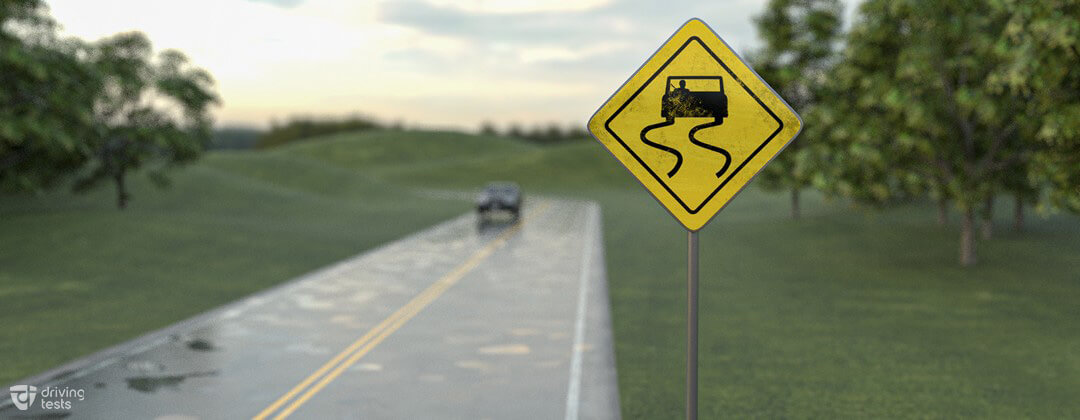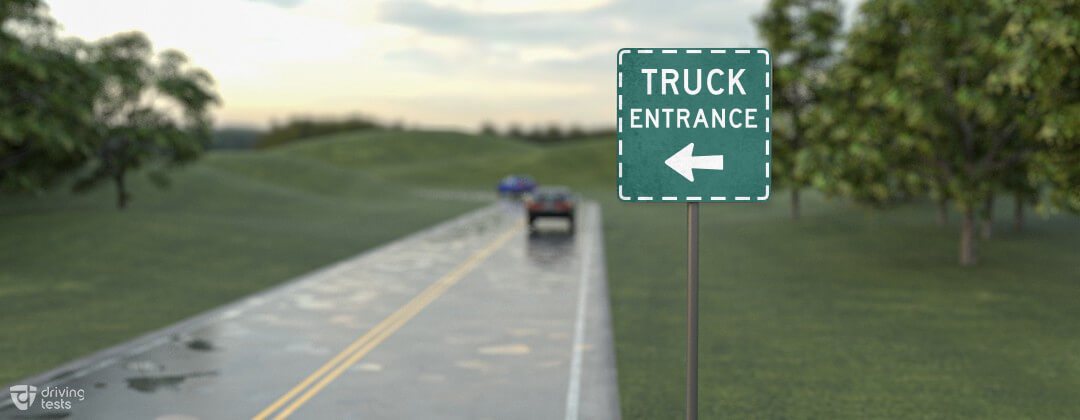FREE SGI Class 1 License Questions and Answers
When you see a stop sign, you have to stop at the stop line, give way to oncoming traffic and pedestrians, and then drive carefully. According to the law, "stop" denotes the total halt of all vehicle motion. Sometimes, drivers proceed through stop signs without stopping completely; instead, they move forward at a speed of about 8 km/h. It's called a "rolling stop" in most situations, but legally you have to stop completely. The amount of time that passes between a motorist's decision to stop and when they actually hit the brake pedal is known as driver response time. A typical driver reacts in 0.75 seconds or less. The rear drive wheels may lock if you apply too much brake. The rear wheels typically slide sideways in an effort to "catch up" with the front wheels since locked wheels have less grip than rolling wheels. A drive-wheel skid in a car carrying a trailer can allow the trailer to force the car laterally, jackknifing it out of control. Check your gauges when you start your engine. The oil pressure reading should quickly return to normal. The coolant temperature should start to gradually increase until it reaches the non-thermal operating range. There should be nothing abnormal about the voltmeter. Of course, you also need to make sure you have enough gasoline for the journey. This warning warns that when it's wet, the road may get slick. In precipitation, reduce your speed, extend your following distance, steer clear of sharp turns, and soft-brake. At bridges and overpasses, these signs are frequently erected. Release the throttle pedal, put the car in low gear, and apply the engine brakes to slow down when you're about to begin a steep descent. Once you've increased your speed, don't attempt to decrease it. At that point, you won't be able to change into a lower gear. An automatic transmission may be harmed if you attempt to downshift after your speed has already increased. A truck entrance is indicated by this sign to the left. The car needs to have a pre-trip inspection done before it is used for the first time of the day. The Gross Vehicle Weight Rating (GVWR) is a manufacturer's rating that defines the combined weight of a vehicle and the maximum load it should carry. Don't drive the vehicle until you're sure that the coupling is correct. If the connection seems loose make the necessary adjustments. Otherwise, the trailer might come loose while you're driving. You should empty the air tanks at the end of each working day, if your car doesn't automatically do so, to prevent moisture and oil from freezing or coagulating and breaking your brakes.When a stop sign has a painted stop line, what should you do?
What is a driver's typical reaction time?
Over-braking when pulling a trailer can occasionally result in
After starting your car, which gauges should you check?
What does the meaning of this sign indicate?

Prior to descending a grade, or slope, you have to
What does the meaning of this sign indicate?

When must one conduct a pre-trip inspection?
GVWR, or gross vehicle weight rating, what does it mean?
When a tractor and a semitrailer are coupled,
The majority of commercial vehicle manufactures advise periodically thoroughly emptying the oil and moisture from an air brake system.